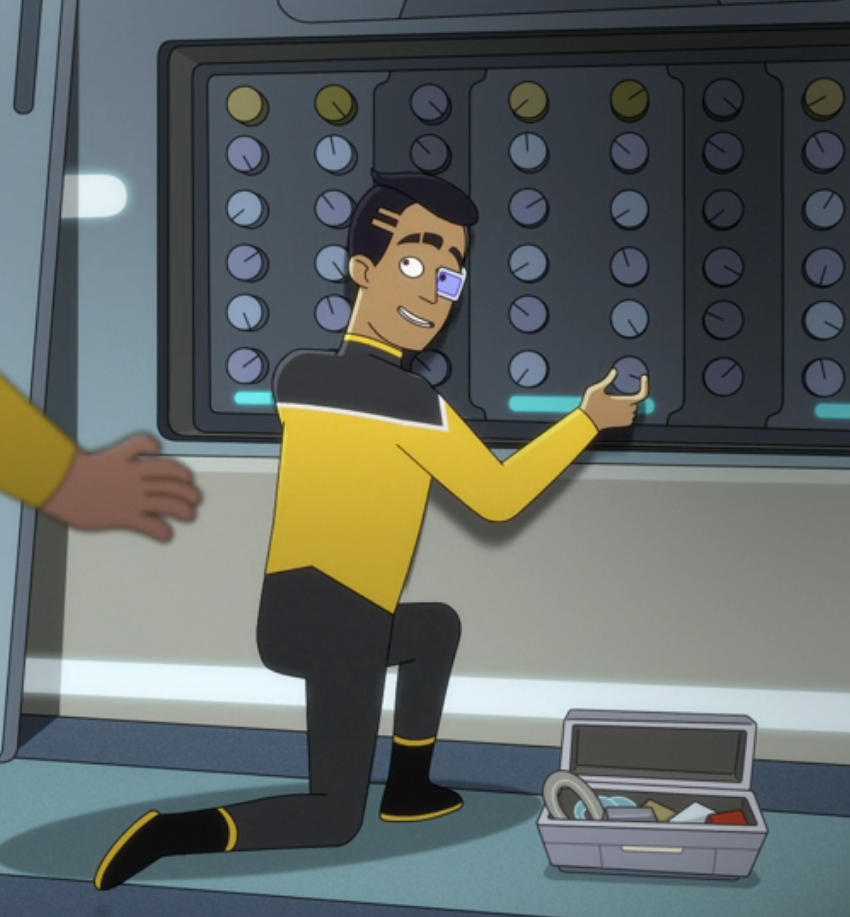In LD 1x08 Veritas, Rutherford is rotating some "EPS Capacitors" (These seem to have little mention outside this episode) to prevent them from overheating.
Before I ask my questions, I first want to establish what makes sense to me here. Although not previously mentioned, like electrical capacitors, EPS Capacitors probably help to "smooth out" plasma flow. As these are high-power systems, I am sure there is risk of overheating in these capacitors that is not as present in current electrical capacitors, which usually don't have a rotating mechanism.
Now, for the questions:
- Why do the capacitors rotate, and what does this do to prevent overheating?
- Why do they have to do this in the 24th century in a post-scarcity society?
For the first: My first theory is these are variable capacitors. Assuming the mechanics work similarly to electrical capacitors, Rutherford could be changing the capacitance of each capacitor to rotate the load. This doesn't feel completely right, though (for instance, how to keep the array within specification).
A better theory is that although its function is analogous to an electrical capacitor, the physical mechanics used behind it are different, and somehow wear in the internal materials is uneven unless rotated, somewhat like tires.
For the second: We practically mastered rotating crap with electricity in THE 20TH CENTURY and have only gotten better since. I don't understand why Starfleet couldn't just give each capacitor a servo motor running off an EPS tap that does the randomization automatically, or at the very least mount them all on a belt. Heck, if heat is the problem, why not a liquid cooling loop? The worst that can happen is an ensign has to go get a mop.
It could be possible that maybe it was kept there as a task to bully ensigns/make officers feel useful, but I feel that kind of thinking wouldn't necessarily exist at the Cali class drawing board. It could be possible that somehow the magnets in the motor interfere with the EPS containment field, but I feel like that would mean a lot more crap would have to be banned on board if the EPS conduits were that vulnerable.
Ultimately, I really can't make full sense of this second point, and would love insights on this and my first question.

I have some thoughts on that despite the fact that I don't even watch the show.
For the first point: Load distribution to ensure that the system wears down more evenly is a thing that can be done. Yeah you may be able to automate it but there can be reasons why you may not want to do that, like added complexity that makes the system even more failure prone For the second point: It's still a lot easier to maintain something than it is to fix it when it's broken. Having eyes there to do that may just be a way to get someone to check for potential failure points before they become a problem. Even if they may be in other systems nearby that are unrelated. Having someone check those systems by hand also has a security aspect to it because it makes it less likely that someone can just tamper with that system. Yes you have dedicated security personnel but security is still everyone's responsibility.
Also. Plot points and all that stuff that makes it fun to watch.
Although I don’t agree with your argument about the complexity of automation (someone could just fix the motors every once in a while if some are borked), I also see your point that as sort of a bread-and-butter ship, the California class might be designed as a KISS ship for its application, whereas maybe something like an Intrepid class, if expected to go into battle, might have an automated system.